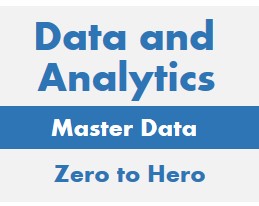Data Science Sandbox Tutorial
Making data science breakthroughs through use of traditional
databases such as application databases or data warehouses
has its challenges.
Application data needs to be protected and not harmed through
experimentation.
Individual workstations may lack scale and potential for team collaboration.
Spreadsheets also lack scale, support simpler problems and have limtted shareability.
Problems to be solved are often complex and require large
volumes of data and computing power to solve.
The answer is provided by the Data Science Sandbox.

What is a Data Science Sandbox
The Data Science Sandbox is an environment specifically designed for
data science and analytics.
It gives data scientists and analysts a protected, shared environment
where models can be built and experiments conducted
without harm to application databases.
The Data Science Sandbox often has these characteristics and features:
- Scalability: can grow and shrink to accomodate
the volume of data and computation needed.
Cloud environments provide powerful scalability.
- Shareable Code and Models:
a combination of source code repository and sharable code snippets
enable model management.
Code sharing via Python Notebooks and Zepelin Notebooks is
a best practice.
- Data Science Platforms and Languages:
provide the data scientist with base to develop solutions.
Platforms can provide a graphical interface, such as:
Alteryx, Knime and Rapid Miner.
Programming languages provide detailed control, such as:
Python, R, Scala, C++ and Julia.
Julia has 10x to 30x faster execution speeed compared to Python and R.
- Data Science Libraries: provide prebuilt solutions to
data science challenges.
Python core libraries like Numpy and Pandas are a given, plus data science
libraries like Scikit-Learn, TensorFlow and Keras provide a solution framework.
- Data Protection: provides security for at risk data
such as customer personal information.
Data protection measures can include: user authorization, user authentication,
firewalls, data encryption and data obfuscation.
In many cases, senstive data can be removed before loading to the
Data Science Sandbox environment.
- Data Engineering: supplies the data environment:
datastores and data pipelines.
This function is performed by Data Engineers.
- Data Wrangling: enables data to be "mssaged" at a detail level.
It includes: data cleansing, filtering and organizing.
This function is performed by Data Scientists.
- Flexible Data Access: data virtualization, data lake,
data import
- On Demand: enables new projects and research
efforts to start quickly without
- Play and Experimentation: enable creative juices to flow
for the development of innovative solutions.
Data Scientists can quickly develop and test hypothesis through experimentaiton.
Data Science Sandbox References and Links
Check out these Data Science Sandbox links:
Advertisements




